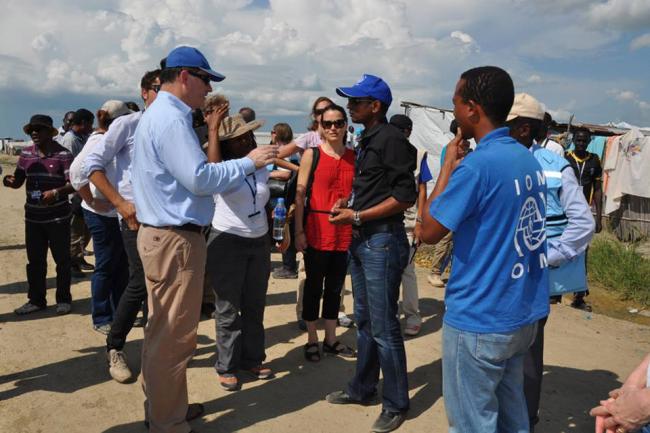
UN official urges support for people in central and eastern Africa
“Each of these countries faces a unique set of challenges. But in each country, I spoke with people who have had to run from their homes again and again, fleeing successive waves of violence. I met children who have grown up never knowing peace and stability,” Ging said in a press briefing at UN Headquarters in New York.
From 18 to 25 October, he visited the three countries along with representatives from the United States, the United Kingdom, European Union and the Netherlands.
Ging said that from his visits he gathered that people demanded simple things, such as rebuilding their livelihoods, educating their children and access to health care, but primarily, after years of “exhausting violence,” they desperately wanted an end to the conflicts.
Yet, he said, despite such challenges there is still hope of progress in each country.
“In Sudan, the Government indicated a new willingness to allow humanitarian workers to access those in need of assistance. In South Sudan, the signing of a new peace agreement provides a prospect for an end to the violence which has engulfed the country. And in Somalia, we saw progress that many described as the best chance the country has had in 25 years to build lasting peace,” he said.
At the same time, Ging also said that in South Sudan, worsening violence has now spread to the central region of the country, systematically targeting civilians.
He also noted that in Southern Unity state, 1,600 women have been forcibly abducted since May, more than 1,000 civilians killed, 1,300 women and girls have been raped and more than 15,000 children have been recruited into armed groups.
Further, he also warned of the devastating impact El Niño is touted to have across East Africa, in the next few months.
According to OCHA, El Nino is slated to cause an estimated 83 per cent increase in food insecurity by the start of 2016. The number in need of food assistance across the region is forecast to increase from 12 million at the start of 2015 to 22.1 million at the start of 2016, with flooding set to affect up to 3.5 million people.
Additionally, the UN relief wing said that the countries in this region are highly dangerous for humanitarian workers with at least 10 aid workers killed in Somalia in 2015 and 34 killed in South Sudan since December 2013.
Ging noted that despite such dangerous conditions, the aid workers continue to reach millions of people every month with lifesaving assistance.
“It is inspiring to witness the efforts our colleagues are making on the front line. The international community must continue to support these efforts, and stand in solidarity with those who have been the victims of conflict for far too long,” Ging concluded.
Photo: OCHA/Guiomar Pau Sole
Support Our Journalism
We cannot do without you.. your contribution supports unbiased journalism
IBNS is not driven by any ism- not wokeism, not racism, not skewed secularism, not hyper right-wing or left liberal ideals, nor by any hardline religious beliefs or hyper nationalism. We want to serve you good old objective news, as they are. We do not judge or preach. We let people decide for themselves. We only try to present factual and well-sourced news.







